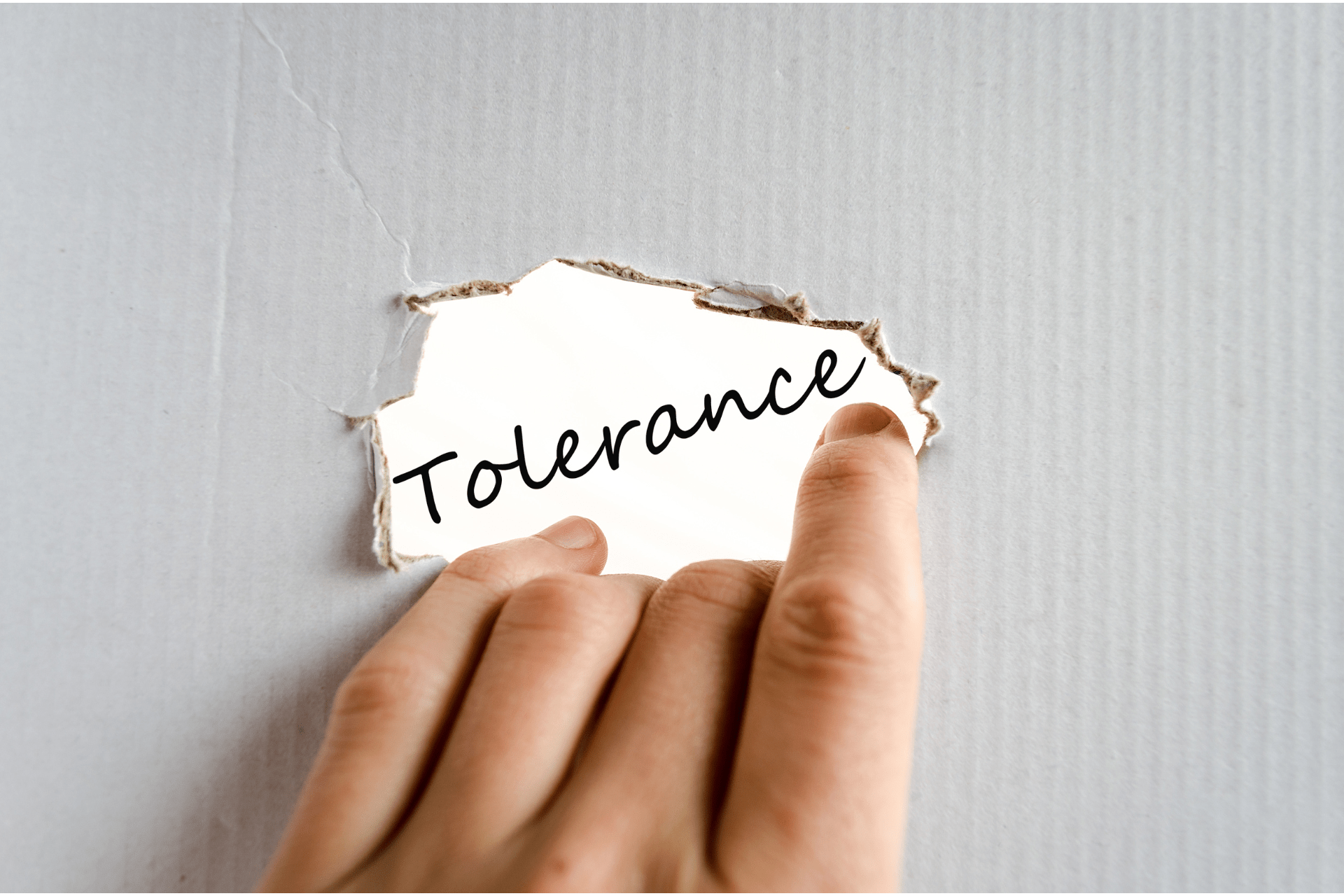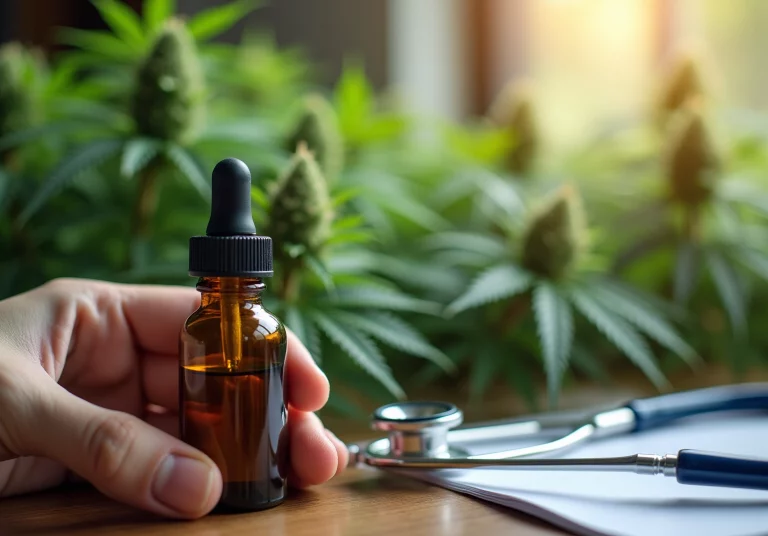Should I Take a Tolerance Break?
by Haley Mills · March 31, 2023
Are you smoking too much weed? Learn how to lower your weed tolerance with a “tolerance break” and get the most out of your cannabis experience.

If you’re looking to lower your weed tolerance level, you probably have questions about how to do that effectively. Let’s explore cannabis tolerance and a few ways you can decrease it.
What is cannabis tolerance?
Cannabis tolerance refers to the body’s process of getting used to an amount of cannabis, which can lessen the effects over time. This tolerance build-up can be problematic for those using cannabis for medicinal purposes.
How do you get a high tolerance for weed?
Cannabis tolerance develops when it is regularly consumed. THC is a psychoactive compound that affects the CB1 receptors in the brain.
If THC is consumed often, the CB1 receptors are reduced over time, so the same amount of THC won’t affect the CB1 receptors as effectively, and the effects will be reduced.
Tolerance development depends on various factors, including:
- How often do you use weed?
- How potent is the weed strain?
- How do your genetics and biology factor in?
Building a substance tolerance isn’t unique to cannabis products. It’s possible to tolerate other things such as caffeine, alcohol, melatonin, painkillers, and antidepressants.
Signs your Tolerance may be High
There are two primary indicators that you’ve developed a high tolerance to weed if you are experiencing withdrawal symptoms if you stop or have to increase your cannabis dose to feel the same effects.
Chronic daily cannabis smokers typically develop a high tolerance through regular use.
Consuming high-THC cannabis products can also contribute to a higher tolerance. When THC is regularly ingested, cannabinoid receptors are reduced in your body’s endocannabinoid system.
These receptors are found in the central nervous system —the brain and spinal cord—and help the body maintain homeostasis by regulating various bodily functions. THC hangs out in fat cells and the more you use, the longer it will stay in the system.
How long does marijuana stay in the system?
A 2017 study estimated a three-day detection window for one marijuana joint, but it greatly varies depending on the person.
The results showed:
- For first-time cannabis smokers, drug tests may detect marijuana for about three days.
- The detection window is five to seven days for a person who uses marijuana three or four times per week.
- For those who use cannabis daily, drug tests may detect it in their system for thirty days or more.
How long does THC stay in the system vs. CBD?
The two most common types of cannabinoids are tetrahydrocannabinol (THC) and cannabidiol (CBD).
THC is broken down in the body and modified into molecules called metabolites. Approximately eighty metabolites are formed from THC and may affect the body’s endocannabinoid system.
These metabolites are stored in our body fat and are gradually eliminated through our waste. THC metabolites have an elimination half-life ranging from twenty hours to thirteen days or more.
CBD is similar to THC and can stay in your system for about eight to twelve days. However, most drug panels are not looking for this cannabinoid. Research shows that After four to five half-lives pass, the plasma levels of CBD are lower than a relevant concentration and considered eliminated.
Adverse Risks of a High THC Tolerance
A high weed tolerance doesn’t necessarily result in any adverse health effects. However, people with high tolerance typically consume more marijuana than others. Smoking cannabis, or anything else, isn’t great for lung health. If you have a high tolerance, you’ll need to smoke to feel similar effects, which naturally increases the risk of lung infections, inflammation, persistent coughing, and other respiratory issues.
Another risk of increased cannabis use is the potential for interactions with other medications. Marijuana use may adversely interact with antibiotics. THC can interact with SSRIs, a common type of antidepressant designed to increase serotonin in the brain. THC has the potential to interact with anesthesia, increasing the risk of surgical complications for heavy cannabis users.
Some cannabis users report feeling anxious, dizzy, or nauseous after consumption. Because a high tolerance will typically lead to people using higher dosages, it naturally increases the risk of experiencing one or more undesirable side effects.
With greater tolerances and frequency in use, there could be a risk of developing Cannabinoid Hyperemesis Syndrome. It is a rare condition resulting in severe and repeated vomiting after heavy, long-term cannabis use. Beyond health complications, a high tolerance could adversely affect the pocketbook because you’ll consume and purchase more weed to feel similar effects.
Six Ways to Reset Your Cannabis Tolerance
Below, we’ll learn how to lower weed tolerance in six different ways.
Exercise more frequently
Exercise can also have various long-term effects on your tolerance. It can improve your overall health and well-being, so your body will be better at transporting THC throughout. Exercise also burns fat cells and releases endorphins, so it’ll be easier to smoke less weed to feel good.
Switch the Method
Trying out a different consumption method can significantly reduce your tolerance. Switching to vaping, edibles or concentrates might help if you’re used to smoking joints. Trying various cannabis consumption methods will surprise the body and cause more substantial effects, as it will process THC differently. You don’t have to change your method forever, but it might be a good idea to switch it up sometimes.
Microdosing
If you’re not ready to take a complete tolerance break, try lowering your daily dose of THC by taking two-thirds of your usual amount. It may still be challenging but more manageable than getting rid of THC completely, and you’ll see your tolerance decrease in a week or two.
Microdosing is a perfect way to reset your tolerance and not experience withdrawal symptoms from smoking flower.
Change Strains
If you have a habit of choosing the same strain, it could be time to try something new. This factor is especially true if you prefer sativa or indica strains. Indica and Sativa develop tolerance differently, so regularly rotating them or using hybrid strains can help lower weed tolerance.
Up the CBD Levels
Another way to lower your tolerance is to choose a cannabis strain with a higher CBD-to-THC ratio. Selecting a strain higher in CBD can relieve withdrawal symptoms when taking a t break. CBD doesn’t offer psychoactive effects but has several physical health benefits while you lower your cannabis tolerance.
Tolerance Break
The tried-and-true method to a lower tolerance is the tolerance break, or “T break.” A tolerance break involves taking days to weeks off from consuming cannabis products. Regularly consuming cannabis can reduce the CB1 receptors found throughout the ECS.
In a 2011 study, researchers found that CB1 receptors could recover after some time, stating, “We found it decreased CB1 receptor binding in subjects who had smoked large amounts of cannabis daily for years. Even in these heavy smokers, binding returned to normal in most regions after four weeks of abstinence.”
Cannabis Withdrawal Symptoms
Many people who consume THC regularly go through mild cannabis withdrawal when taking a T break.
Cannabis withdrawal isn’t as intense as withdrawal from alcohol or other substances, but it can be uncomfortable with symptoms like:
- mood swings
- fatigue
- headaches
- loss of appetite
- nausea
- insomnia
- vivid dreams
The good news is that cannabis withdrawal symptoms typically last only 72 hours and can be eased with ibuprofen, water, and healthy foods.
Benefits of A Lower Cannabis Tolerance
You will notice these three benefits after successfully lowering your weed tolerance.
Smoke Less
Smoking less cannabis is the ultimate end goal. Smoking a high-THC marijuana strain may help to make smoking easier so you can feel the full effects again.
Save Money
When you smoke less marijuana, you save more money. Saving money is an excellent benefit to lowering your tolerance and cannabis consumption.
Get Higher
When you choose to lower your tolerance, you’ll get used to smoking less and, in turn, get higher on those nights you want to indulge in weed.
How can I prevent developing a high tolerance?
Once your tolerance has been reset, here are a few ways to maintain it:
- Use low-THC products. THC leads to the depletion of CB1 receptors, so it’s wise to try lower THC levels when you smoke cannabis.
- Don’t use weed too often. The more you consume cannabis, the higher your tolerance will be.
- Try a lower dosage. Try consuming less at once and waiting longer in between doses.
- Switch it up with CBD. Consider giving CBD products a try for their potential health benefits. THC has some advantages that a CBD cannabis strain doesn’t, but it can still help combat a tolerance build-up.
Last Updated: August 8, 2024
Get Approved for Your Medical Marijuana Card in Minutes!

Get Your Medical Card
Connect with a licensed physician online in minutes

Like This Article?
Share with your friends
Table of Contents
Keep Reading
-
4 Strains for Killing Cancer: Comparing Their Effects and Risks
Discover effective strains for killing cancer symptoms and their unique benefits in treatment.
-
Does Georgia Have Medical Marijuana? Key Facts and Access Guide
Discover if Georgia has medical marijuana and learn about access and qualifying conditions.
-
4 Steps on How to Get a Medical Card in Pennsylvania
Learn how to get a medical card in Pennsylvania with these four simple steps.



